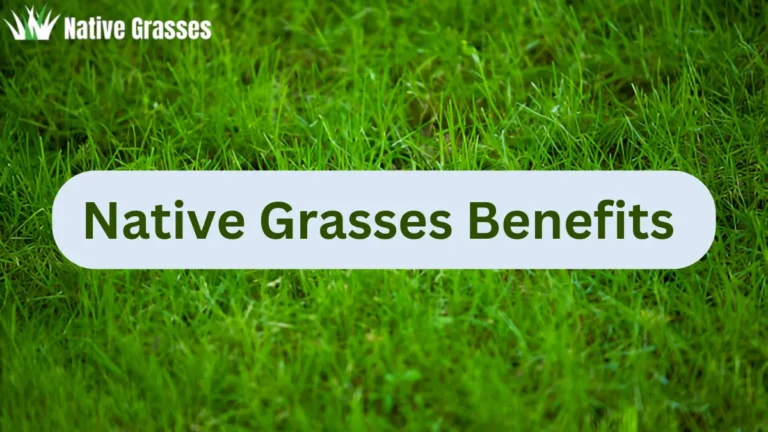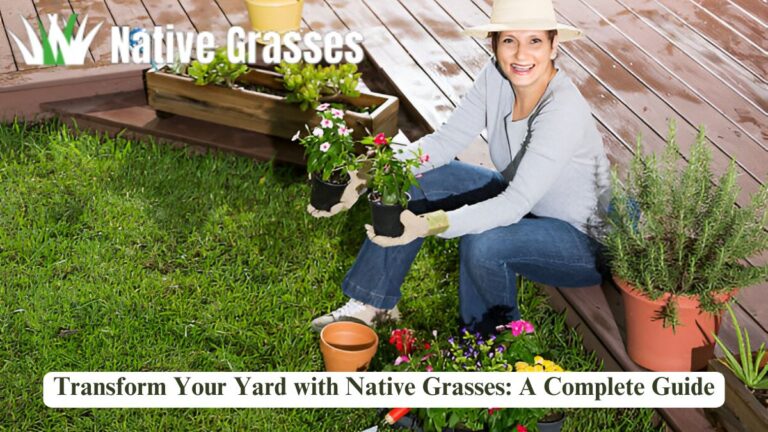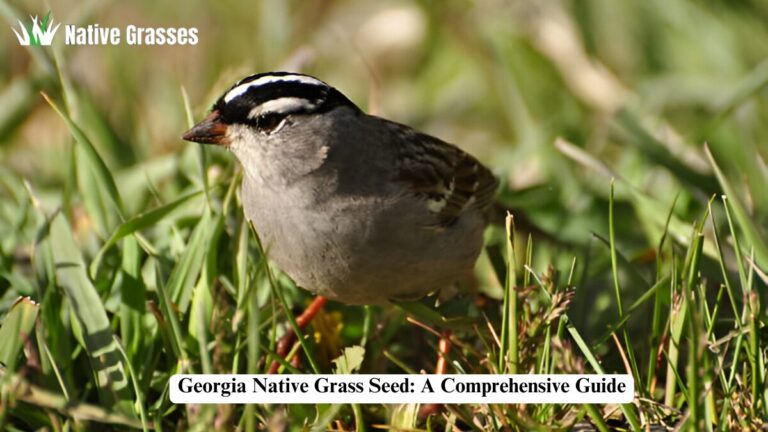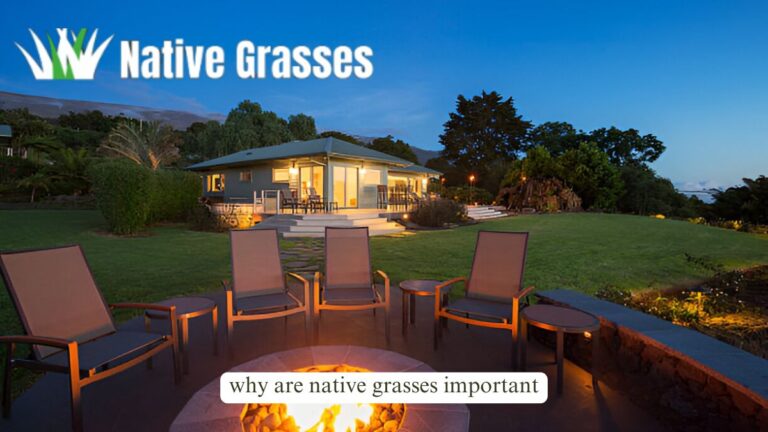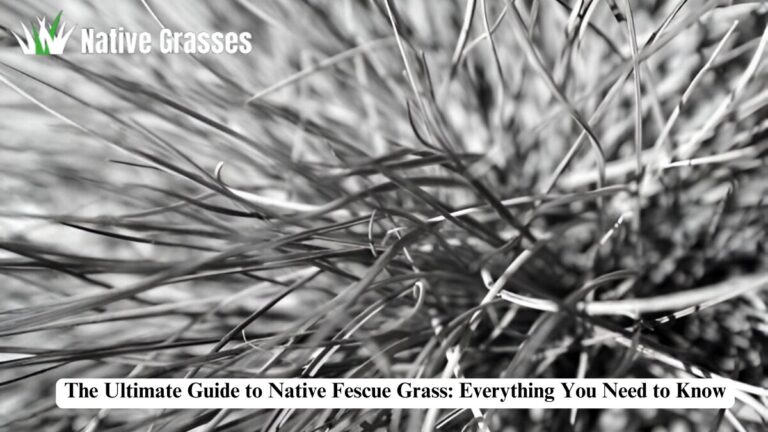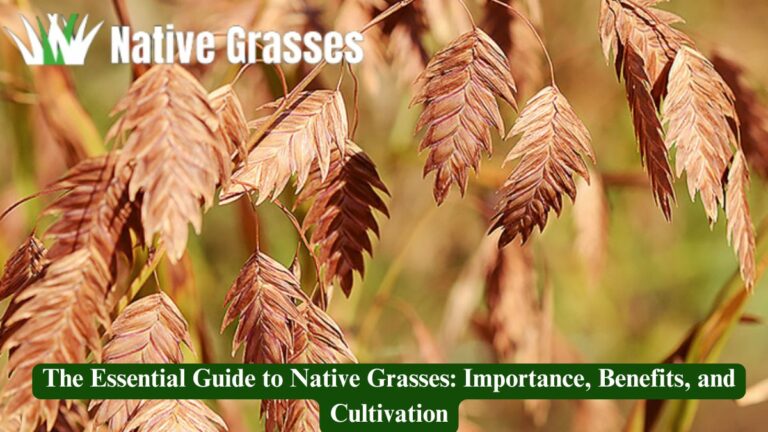Grass Native to Georgia: A Comprehensive Guide

Georgia’s varied geography, ranging from sandy coastal plains to lush mountain regions, creates an ideal habitat for a wide range of native grasses. These grasses, having evolved in harmony with the local environment, are naturally suited to Georgia’s climate and soil conditions. They offer numerous advantages, from improving soil health to supporting biodiversity. By integrating native grasses into your landscapes, you’re contributing to a greener, healthier environment while enjoying their natural beauty.
Native grasses aren’t just functional—they’re also versatile. Whether you’re creating a meadow, stabilizing a slope, or designing a garden, these grasses provide a foundation for sustainable landscaping.
Benefits of Native Grasses in Georgia
Environmental Advantages
Native grasses are champions of ecological health. Their deep root systems and adaptability make them invaluable for various environmental purposes:
- Erosion Control: The extensive roots of native grasses, such as switchgrass and Indiangrass, hold soil in place, preventing erosion on slopes and along riverbanks. This is particularly beneficial in Georgia’s hilly regions and flood-prone areas.
- Water Conservation: Unlike non-native turf grasses, native species are well-adapted to Georgia’s rainfall patterns. Once established, they require little to no supplemental watering.
- Wildlife Habitat: Native grasses support pollinators like bees and butterflies, provide nesting materials for birds, and offer shelter for small mammals. Species such as little bluestem attract a variety of wildlife throughout the year.
Low-Maintenance Landscaping
By choosing native grasses, you’ll save time, money, and effort while enjoying a resilient and self-sustaining landscape:
- Adapted to Local Conditions: Native grasses thrive in Georgia’s clay soils, sandy terrains, and varying climates without the need for fertilizers or pesticides.
- Drought Resistance: Warm-season grasses like eastern gamagrass and switchgrass are naturally equipped to withstand periods of drought, making them ideal for areas with inconsistent rainfall.
- Aesthetic Appeal: Native grasses offer year-round beauty. Their lush green hues in spring and summer transition into golden and reddish tones in fall and winter, adding seasonal interest.
Carbon Sequestration and Soil Health
Native grasses play a vital role in combating climate change:
- Carbon Storage: Deep-rooted species like Indiangrass store significant amounts of carbon underground, helping reduce greenhouse gases.
- Soil Enrichment: Over time, native grasses improve soil fertility and structure, making them a sustainable choice for long-term landscaping.
Characteristics of Georgia’s Native Grasses
Growth Habits
Native grasses in Georgia exhibit a variety of growth patterns that cater to different landscaping needs:
- Warm-Season Grasses: These grasses, including little bluestem and switchgrass, grow actively during Georgia’s hot summers and go dormant in winter.
- Cool-Season Grasses: Though less common in southern Georgia, cool-season grasses flourish during cooler months in northern regions.
- Bunch Grasses: These grow in clumps, leaving space for wildflowers and other plants, making them ideal for creating diverse habitats.
- Sod-Forming Grasses: Grasses like eastern gamagrass form dense mats, perfect for erosion control and ground cover.
Adaptability
One of the key features of native grasses is their ability to adapt:
- Soil Types: Native grasses thrive in a range of soil conditions, from sandy coastal soils to clay-rich Piedmont soils.
- Drought Tolerance: Once established, many native grasses can survive extended dry periods with minimal care.
- Resilience: They resist pests, diseases, and harsh weather, making them a dependable choice for Georgia landscapes.
Top Native Grasses of Georgia
Little Bluestem (Schizachyrium scoparium)
Characteristics
- Height: 2-4 feet.
- Color: Bluish-green foliage turns reddish-bronze in fall.
- Habitat: Commonly found in dry prairies, open woods, and roadside areas.
Benefits
- Drought-resistant and low-maintenance.
- Provides food and shelter for butterflies and birds.
- Works well as an ornamental grass in gardens.
How to Grow
- Soil: Prefers well-drained sandy or loamy soils.
- Sunlight: Thrives in full sun.
- Watering: Requires minimal water once established.
Eastern Gamagrass (Tripsacum dactyloides)
Characteristics
- Height: 3-8 feet.
- Color: Bright green foliage with distinctive seed heads.
- Habitat: Common along riverbanks, wetlands, and lowland areas.
Benefits
- Excellent for stabilizing soil and preventing erosion.
- Attracts pollinators like bees and provides cover for birds.
- Can serve as forage for livestock.
How to Grow
- Soil: Thrives in moist to wet soils.
- Sunlight: Grows in full sun to partial shade.
- Watering: Requires consistent moisture.
Switchgrass (Panicum virgatum)
Characteristics
- Height: 3-6 feet.
- Color: Green foliage transitions to golden tones in fall.
- Habitat: Found in prairies, meadows, and open woodlands.
Benefits
- Versatile for erosion control, wildlife habitat, and ornamental use.
- High carbon sequestration potential.
- Serves as a biofuel crop.
How to Grow
- Soil: Tolerates a wide variety of soil conditions, including poor soils.
- Sunlight: Requires full sun.
- Watering: Minimal watering needed once established.
Indiangrass (Sorghastrum nutans)
Characteristics
- Height: 3-7 feet.
- Color: Yellowish-green foliage with golden seed heads.
- Habitat: Thrives in prairies, savannas, and open fields.
Benefits
- Adds vertical interest to landscapes.
- Deep roots improve soil structure and prevent erosion.
- Attracts pollinators like bees and butterflies.
How to Grow
- Soil: Prefers well-drained soils.
- Sunlight: Full sun is ideal.
- Watering: Low water requirements once established.
Designing Landscapes with Native Grasses
Combining Grasses with Wildflowers
Pairing native grasses with wildflowers creates stunning landscapes:
- Example Pairings:
- Little bluestem with black-eyed Susan.
- Switchgrass with purple coneflowers.
Using Grasses for Groundcover
- Sod-forming grasses like eastern gamagrass can replace traditional turf lawns.
- Benefits:
- Requires less mowing and irrigation.
- Offers better resilience during droughts.
Creating Habitat Zones
Design landscapes to attract and support wildlife:
- Plant grasses with tall seed heads to attract birds.
- Incorporate flowering species to support pollinators like bees and butterflies.
Table: Comparison of Georgia’s Top Native Grasses
| Grass Name | Height | Sunlight | Soil Type | Key Benefit |
| Little Bluestem | 2-4 feet | Full sun | Well-drained | Drought tolerance |
| Eastern Gamagrass | 3-8 feet | Full/Partial | Moist | Erosion control |
| Switchgrass | 3-6 feet | Full sun | Versatile | Carbon sequestration |
| Indiangrass | 3-7 feet | Full sun | Well-drained | Vertical landscape interest |
Case Study: Restoring a Georgia Prairie with Native Grasses
In 2015, a community in central Georgia transformed a barren lot into a thriving prairie. Using grasses like little bluestem, switchgrass, and Indiangrass, they:
- Reduced stormwater runoff by 40%.
- Attracted 25+ species of birds within two years.
- Created an outdoor classroom for environmental education.
This restoration showcases the ecological and community benefits of native grasses.
Conclusion
Native grasses are vital to Georgia’s natural heritage. By incorporating them into your landscape, you can create a beautiful, sustainable space that supports wildlife, improves soil health, and conserves water. Whether for home gardens or large-scale conservation projects, these grasses are a cornerstone of ecological balance.
FAQs
What are the most drought-tolerant native grasses in Georgia?
- Little bluestem, Indiangrass, and switchgrass are highly drought-tolerant.
Can native grasses replace a traditional lawn?
- Yes, sod-forming grasses like eastern gamagrass can serve as a low-maintenance alternative to traditional lawns.
How do I propagate native grasses?
- Most native grasses can be propagated from seed or by dividing established clumps.
What is the best time to plant native grasses?
- Late spring to early summer is ideal for warm-season grasses.
Do native grasses require fertilizers?
- No, they thrive in natural soil conditions without fertilizers.
Can I use native grasses for erosion control?
- Yes, grasses like switchgrass and eastern gamagrass are excellent for stabilizing soil.
Are native grasses suitable for urban landscaping?
- Absolutely, they add beauty and ecological value to urban spaces.
How long do native grasses live?
- Many native grasses are perennials and can live for decades with proper care.
Do native grasses attract wildlife?
- Yes, they provide food and shelter for pollinators, birds, and small mammals.
Where can I buy native grass seeds in Georgia?
- Local nurseries, conservation organizations, and online retailers specializing in native plants.

